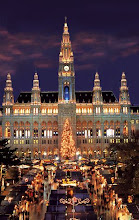The Phoenician city of Gebal was named Byblos by the Greeks, because it was through Gebal that Bύβλος (bublos; Egyptian papyrus) was imported into Greece. The present day city is now known by the Arabic name Jubayl or Jbeil (جبيل), a direct descendant of the Canaanite name.
Byblos (Greek) or Gebal (Phoenician) is located on the Mediterranean coast of present-day Lebanon, about 26 miles (42 kilometers) north of Beirut. It is attractive to archaeologists because of the successive layers of debris resulting from centuries of human habitation.
The site first appears to have been settled during the Neolithic period, approximately 5000 BC. Neothlithic remains of some buildings can be observed at the site. According to the writer Philo of Byblos (quoting Sanchuniathon, and quoted in Eusebius), Byblos had the reputation of being the oldest city in the world, founded by Cronus, and was also where Thoth invented writing, but there has not been concrete proof that it is the oldest city in the world. During the 3rd millennium BC, the first signs of a town can be observed, with the remains of well-built houses of uniform size. This was the period when the Phoenician civilization began to develop, and archaeologists have recovered Egyptian-made artifacts dated as early as the Fourth dynasty of Egypt.
The growing city was evidently a wealthy one, and seems to have been an ally of Egypt for many centuries. The Amarna tablets include 60 letters from Rib-Hadda and his successor Ili-Rapih, rulers of Byblos circa 1350 BC, to the Egyptian government. This is mainly due to Rib-Hadda's constant pleas for military assistance from Akhenaten. They also deal with the conquest of neighboring city-states by the Hapiru. Objects have been found at Byblos naming the 13th dynasty Egyptian king Neferhotep I, and the rulers of Byblos maintained close relationships with the New Kingdom pharaohs of Ancient Egypt. It appears Egyptian contact peaked during the 19th dynasty, only to decline during the 20th and 21st dynasties. Although the archaeological evidence seems to indicate a brief resurgence during the 22nd and 23rd dynasties, it is clear after the Third Intermediate Period the Egyptians started favoring Tyre and Sidon instead of Byblos.[2]
Archaeological evidence at Byblos, dating back to around 1200 BC, shows existence of a Phoenician alphabetic script of twenty-two characters; an important example of this script is the sarcophagus of king Ahiram. The use of the alphabet was spread by Phoenician merchants through their maritime trade into parts of North Africa and Europe. One of the most important monuments of this period is the temple of Resheph, a Canaanite war god, but this had fallen into ruins by the time of Alexander.
The Medieval Church of St. John in Byblos, Lebanon
Byblos Port, the oldest port in the world,[citation needed] is more than 5000 years oldIn the Assyrian period, Sibittibaal of Byblos became tributary to Tiglath-pileser III in 738 BC, and in 701 BC, when Sennacherib conquered all Phoenicia, the king of Byblos was Urumilki. Byblos was also subject to Assyrian kings Esarhaddon (r.681-669 BCE) and Ashurbanipal (r.668-627 BCE), under its own kings Milkiasaph and Yehawmelek.
In the Persian period (538-332 BC), Byblos was the fourth of four Phoenician vassal kingdoms established by the Persians; the first three being Sidon, Tyre, and Arwad.
Hellenistic rule came with the arrival of Alexander the Great in the area in 332 BC. Coinage was in use, and there is abundant evidence of continued trade with other Mediterranean countries.
Terracotta jug from Byblos (now in the Louvre), Late Bronze Age (1600-1200 BC)During the Greco-Roman period, the temple of Resheph was elaborately rebuilt, and the city, though smaller than its neighbours such as Tyre and Sidon, was a center for the cult of Adonis. In the 3rd century, a small but impressive theater was constructed. With the rise of Christianity, a bishop's seat was established in Byblos, and the town grew rapidly. Although a Persian colony is known to have been established in the region following the Moslem conquest of 636, there is little archaeological evidence for it. Trade with Europe effectively dried up, and it was not until the coming of the First Crusade in 1098 that prosperity returned to Byblos, known then as Giblet.
Byblos, under the name of Gibelet or Giblet, was an important military base in the crusader Kingdom of Jerusalem in the 11th and 12th century, and the remains of its crusader castle are among the most impressive architectural structures now visible at its center. The town was taken by Saladin in 1187, re-taken by the Crusaders, and eventually conquered by Baibars in 1266. Its fortifications were subsequently restored. From 1516 until 1918, the town and the whole region were part of the Ottoman Empire. Byblos and all of Lebanon was placed under French Mandate from 1920 until 1943 when Lebanon achieved independence.















